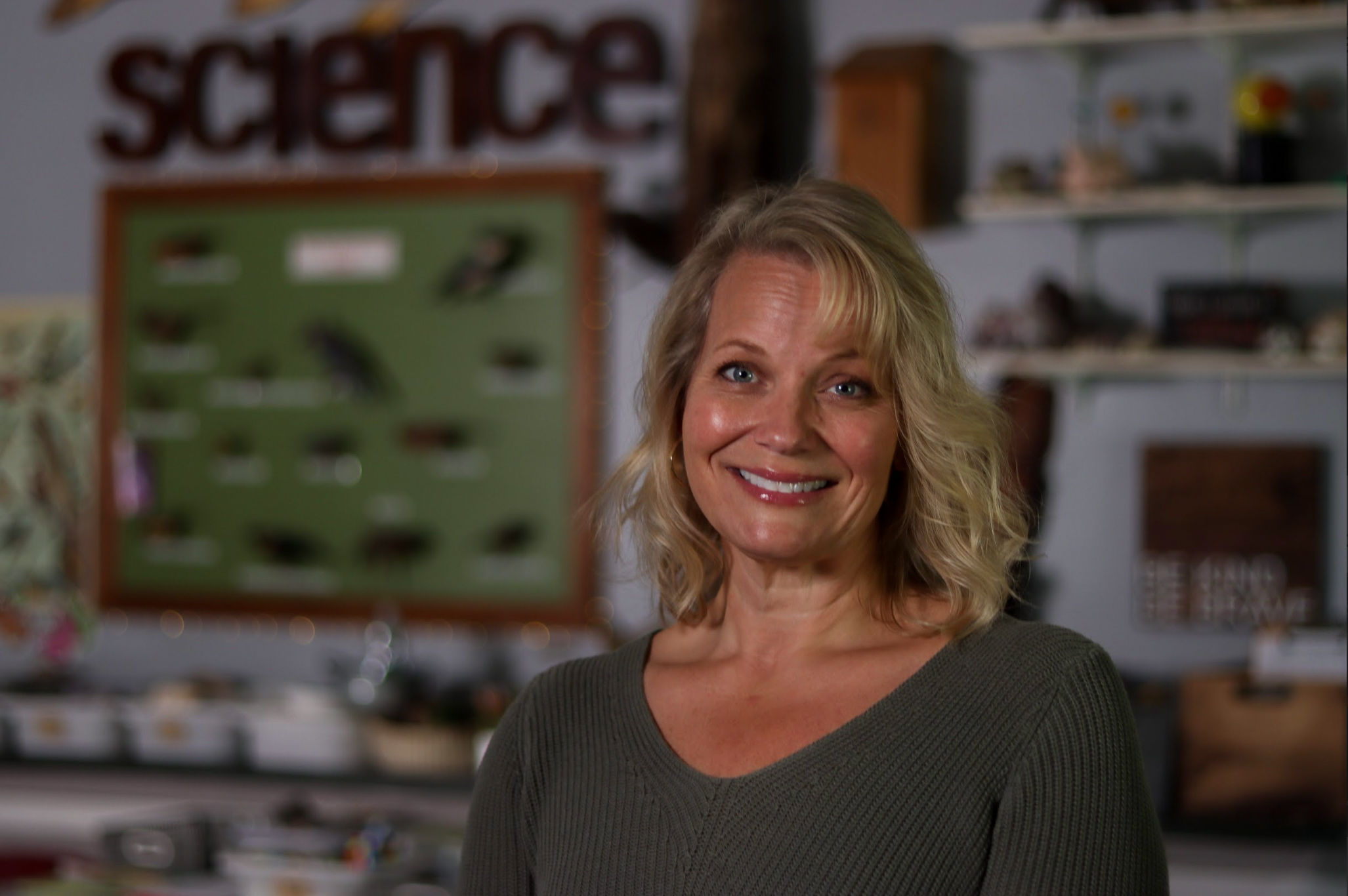
Register
Parents
Parents of current McDonogh students may sign up for website accounts. Signing up for an account allows a parent to access the online directory, DASH, and your customized parent Personal Page.
Alumni
Alumni can create an account in order to take advantage of McDonogh Connect or Pledgemail.
Login
Jen Richter, Lower School Science Teacher
What do you find most rewarding about teaching and working with students?

For me, the most rewarding aspect of teaching is watching students grow—not just academically but as curious, confident individuals. Every day, I get to help them explore the world around them, ask questions, and make new discoveries. It’s incredibly fulfilling to see their eyes light up when they grasp a new concept or make a connection between what they are learning and their lives.
Over the years, I have had the privilege of seeing students I taught in the Lower School walk across the stage at graduation, which is an amazing reminder of the lasting impact we can have. Working with such bright, inquisitive minds — and knowing I’ve been a part of their journey — is something I truly cherish.
What inspired you to become a teacher?
From a very young age, I’ve always been drawn to helping others learn and grow. I had several educators in my own life who made learning exciting and meaningful, and their passion for education deeply inspired me. School was hard for me in many ways. However, these teachers had a way of making students feel seen, understood, and capable of achieving great things. I knew early on that I wanted to be that kind of person for others. But beyond that, I’m inspired by the potential each student holds. The idea that I can help guide young minds — supporting learners to discover their passions, ask questions, and develop confidence in themselves — was a driving force for me.
Teaching is a passion; it’s a way to nurture curiosity, creativity, and a true love for learning, which is something I continue to find incredibly rewarding every day.
What do you hope students will take away from your classes or your mentorship?
My greatest hope is that our young learners will leave my class with a lifelong sense of curiosity and a deep appreciation for the world. I want our students to see learning not as something that just occurs in the classroom but as an ongoing journey where every question leads to a new discovery or adventure. I also hope that our students understand that making mistakes is a real part of learning and that their growth comes from being persistent and open-minded. Ultimately, I want our students to feel empowered to ask big questions, embrace challenges, and know that they are capable of achieving great things, both in and out of the classroom.
Do you have a favorite place on campus? What makes it your favorite?
Yes, I absolutely have a favorite spot on campus. It's a hill near Taggart Chapel that overlooks some green grass and our cornfield. To me, it's one of the most peaceful places at McDonogh. The view from the hill offers a perfect blend of nature’s beauty — a variety of trees and some open sky, often with birds and other small critters scurrying around. It’s a space where I can pause, reflect, and appreciate the tranquility of the campus. In a place as vibrant and active as McDonogh, this quiet spot feels like a hidden retreat where I can recharge and be reminded of the natural wonders that surround us, which is something I try to instill in my students as well.
How do you connect with and engage students in the learning process?
Teaching science to students from prekindergarten through fourth grade means I get to tap into their natural curiosity and enthusiasm for discovery at many levels. To foster engagement, I focus on making learning hands-on and interactive. Whether we’re exploring our amazing campus, investigating a question through an experiment, or working on a creative project, I aim to create experiences that spark imagination and make science come alive!
I also believe that connecting with students on a personal level is essential. I take the time to understand individual interests and learning styles so that I can tailor my approach to what excites, interests, and engages our learners. For younger students, it might be as simple as searching for bugs or worms outside, while older students might dive into more complex topics like biodiversity. By fostering an environment where students feel comfortable asking questions and being curious, I encourage them to take ownership and pride in their learning.